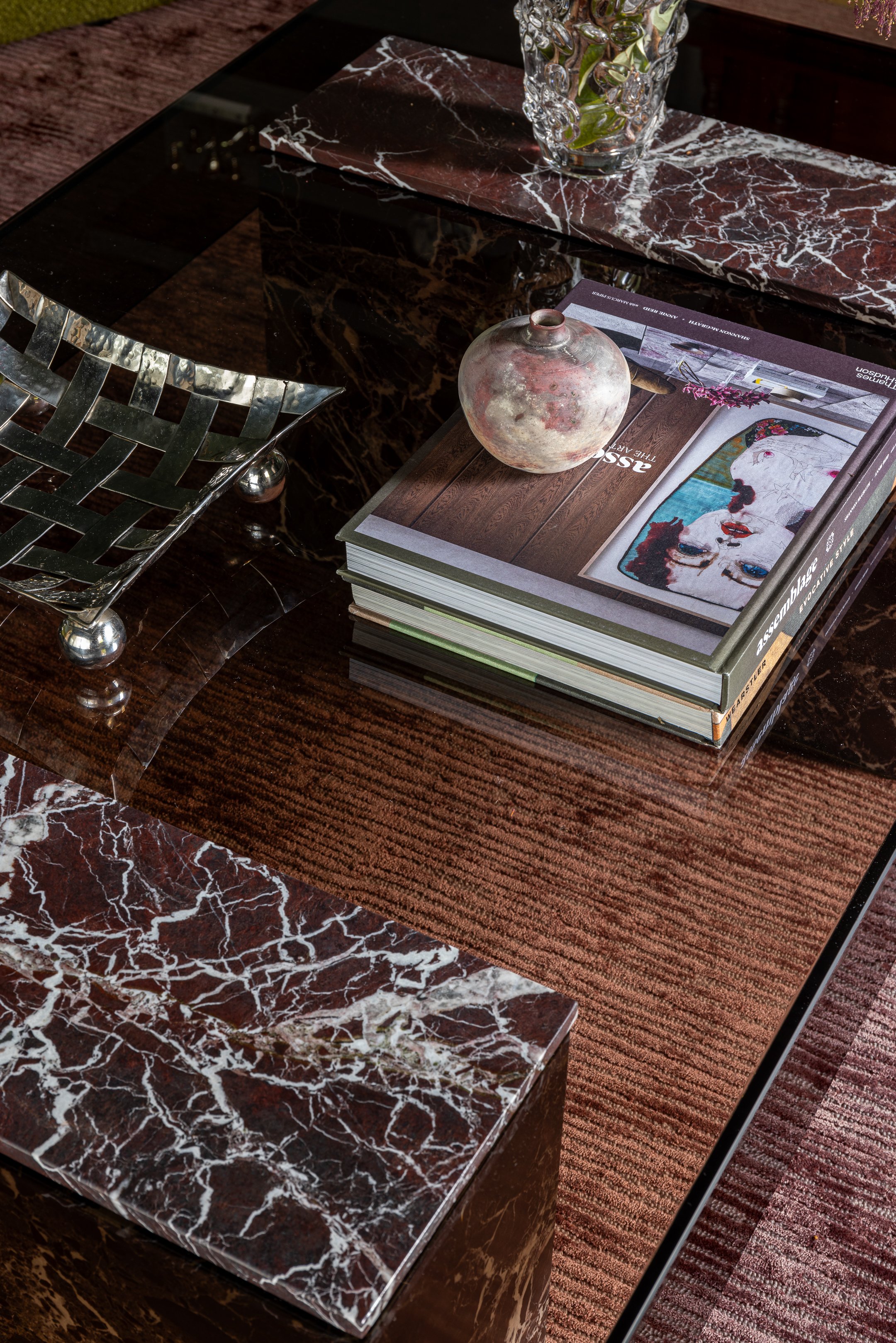How To Create A Sophisticated Living Room With Italian Flair
The sitting room of Kazoo. Photo: Hunting Utopia
They say, “La dolce vita non si compra, si crea” - the sweet life isn’t bought, it’s created. And in the world of interiors, few styles embody that sentiment more effortlessly than Italian design.
Picture the sun-drenched villas of Lake Como, the cinematic glamour of 1970s Milanese apartments, or the polished elegance of Rome’s palazzos. Italian interiors have always been about more than aesthetics. They’re about atmosphere. About bold choices made with intention, form and function working in harmony, and above all, a reverence for craft and curation.
It’s a mood. A mindset. And more often than not, it begins in the living room.
Whether you’re sipping espresso beneath the soft glow of Murano glass or sinking into the pillowy curves of a Mario Bellini sofa, there’s something irresistibly soulful about a space that celebrates texture, tone and tactility in equal measure.
So, how can you bring that inimitable Italian flair into your own space?
Begin with Sculpture
Italian living rooms often feel more like curated galleries than purely functional spaces. This comes down to a reverence for form where every piece feels sculptural. A sofa isn’t just somewhere to sit, it’s a statement.
Low-slung and generously curved, the Mario Bellini Camaleonda is the quintessential expression of this look. But there are many contemporary pieces that echo its spirit: modular, relaxed, and unapologetically indulgent.
Choose furniture that invites you to linger. Opt for organic shapes, generous proportions, and pieces that seem to hug the room. Think: a carved timber coffee table, a tiered travertine plinth, or a lacquered cube side table with a reflective finish. It’s all about creating a space that’s tactile and alive.
The sitting room of Elwood residence features the iconic Sesann sofa which was designed by Gianfranco Frattini in 1970
Photo: Shannon McGrath
Let There Be (Layered) Light
Lighting is never an afterthought in Italian-inspired interiors. It’s atmospheric, moody, and always sculptural in its own right.
Layering is key. Start with a pendant to anchor the room, then build outwards: a floor lamp to ground one corner, a table lamp that doubles as a sculpture, a wall sconce that casts a soft glow. Each light source should serve a purpose - not just to light the space, but to shape its mood.
Consider how light interacts with your surfaces. Let it bounce off tabletops, pool softly in shadowed corners, or catch the sheen of a velvet cushion. Choose pieces that glow rather than glare, and opt for warm white bulbs (around 2700K) to cast a flattering golden light, especially in the evening. And don’t underestimate the power of dimmer switches. You want to be able to shift the mood from an afternoon Negroni to a late-night red with ease.
Embrace Colour with Confidence
Italian interiors aren’t shy when it comes to colour but they do it in a way that feels grown-up and nuanced. Rather than loud primaries, think jewel tones with a twist –merlot, olive, burnt sienna, espresso brown, plum. Walls don’t have to be white to be timeless. In fact, white can sometimes feel stark in a space that’s asking to be layered. Instead, choose colour that complements the room’s light, something that will shift and deepen throughout the day. In my own projects, I often use colour drenching to wrap a room in a singular hue which gives the space an enveloping sense of quiet confidence.
The sitting room of Kazoo was colour drenched in a deep slate-green hue
Photo: Hunting Utopia
Materials That Tell a Story
At the heart of Italian design is a love for materials, not just how they look, but how they feel, age, and endure.
Marble, of course, reigns supreme. Singular and expressive, each slab has its own veining, its own fingerprint. Whether on tabletops, plinths or sculptural accents, marble brings a grounded elegance and a sense of gravitas to the room.
To soften the space, layer in tactile textiles - velvet, bouclé, mohair, and leather. These fabrics invite touch, bringing warmth and intimacy. When paired with harder elements like timber, chrome or brass, you get a dynamic contrast that adds rhythm and richness.
And don’t be afraid of patina. The Italians aren’t precious. A scuff on a bronze lamp or the wear of a well-loved chair only adds to the story. These imperfections are what make a room feel real.
The rosso levanto marble and glass coffee table in the sitting room at Kazoo
Photo: Hunting Utopia
Curate, Don’t Clutter
Italian style is all about sprezzatura - that effortless elegance. And it applies to styling too.
Less is more, but what remains should be intentional. A Murano glass vase bought in Venice. A vintage lithograph. A lamp shaped like an abstract sculpture. Art and objects aren’t just decorative — they spark curiosity, tell stories, and breathe life into a space.
These are the pieces that shift a room from styled to soulful.
Curation at Kazoo - Photo: Hunting Utopia
Final Thoughts
Every year, designers and editors from around the world descend on Milan for Salone del Mobile, the world’s largest design fair. Why? Because Italy continues to set the tone for what’s next in design. It’s a place where heritage meets innovation, and where design isn’t just seen, it’s felt.
Bringing Italian flair into your home doesn’t mean recreating a museum or mimicking a showroom. It’s about tapping into the values that underpin it all: a love of craft, a respect for history, a pursuit of beauty, and a touch of drama.
So go ahead, pour yourself a negroni, fluff the velvet cushions, and let your sitting room tell a story that’s layered, lived-in, and undeniably yours.




